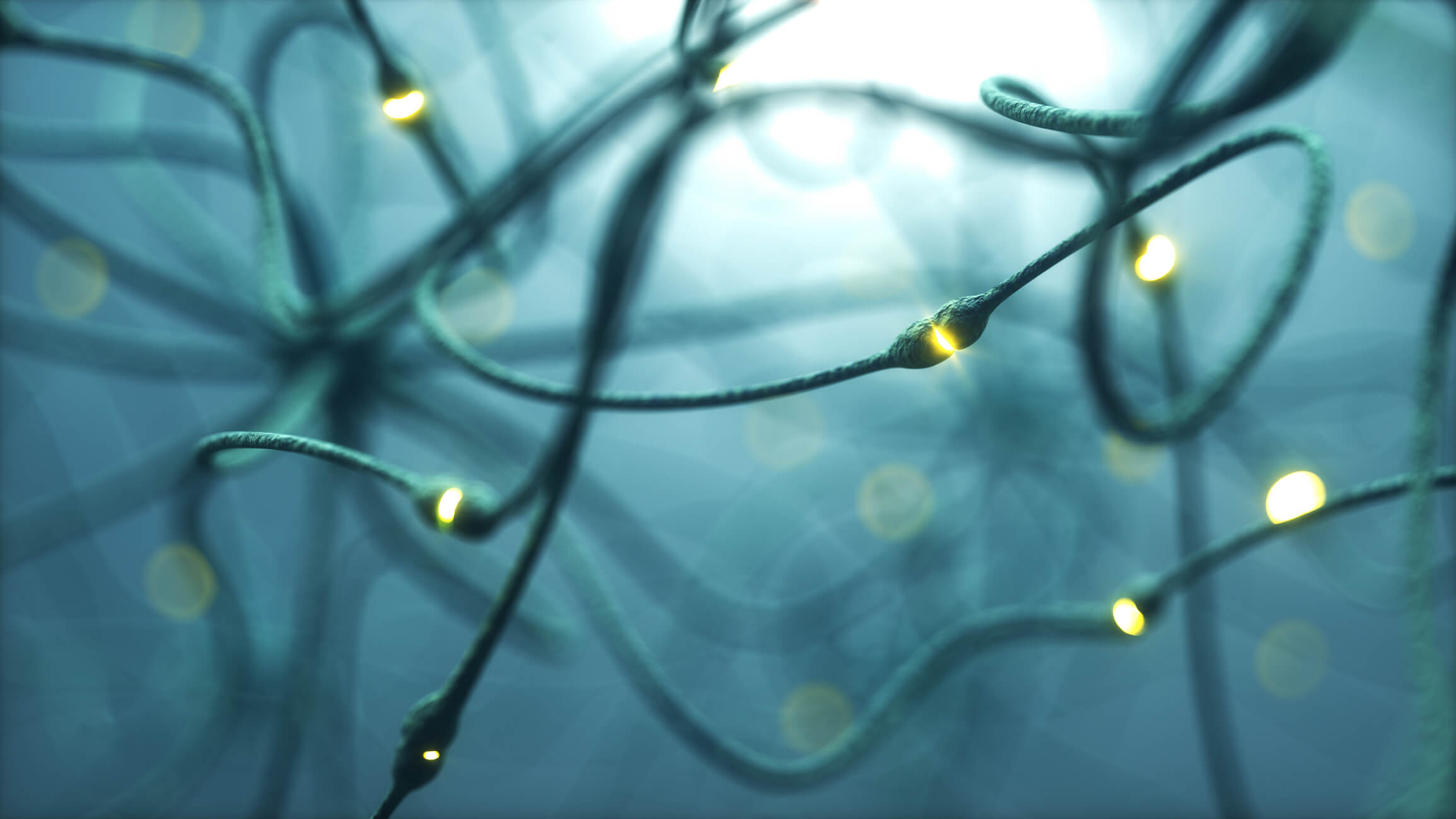The endocannabinoid system (ECS) is a body-wide neurotransmitter network that is very important for your cognitive function and brain health. Therefore, Nootopia takes into account the ECS when formulating our customized nootropics.
In the last article, Part 1, we covered how the ECS worked. In this article, Part 2, we’ll discuss ways that you can optimize your endocannabinoid functions naturally for your best cognitive performance.
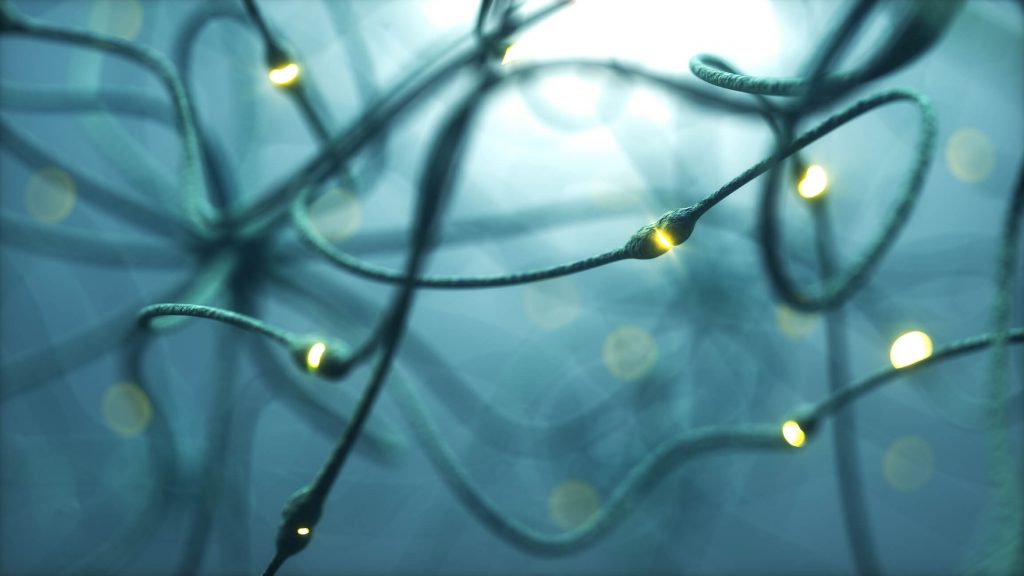
How Natural Substances Can Modify Cannabinoid Functions
CB1 and CB2 receptors both vary in their downstream effects greatly, depending on the nature of the substance activating or inhibiting them.
- Binding the receptors, mildly activating or inhibiting the receptor, while others strongly activate/inhibit them.
- Changing the shape of the receptors themselves, so that a signal that would have previously been activating is dampened or amplified. Modifying the receptor shape can also change the downstream pathways that it activates.
- Inhibiting or stimulating enzymes that degrade cannabinoids
- Inhibiting or stimulating enzymes that produce endocannabinoids
The ECS is so complex and variable that any one particular input into the system may not always behave in an entirely predictable manner. So, individual responses to substances that interact with the ECS can be very individual. This is one of the reasons it’s important to customize your nootropic stacks to what works best for you.
Pharmaceutical Cannabinoid Receptor Agonists/Activators
Epidiolex is an oral cannabidiol solution that is FDA approved for seizures related to a few specific conditions.
In 25 countries, including Canada and most of Europe, Sativex (a spray that contains THC and cannabidiol) is approved for use for neuropathic pain related to multiple sclerosis. A phase 3 trial in the US to assess its safety and efficacy is expected to be completed at the end of 2022.
Dronabinol, AKA Marinol and Syndros, is a synthetic THC and a CB1 and CB2 receptor agonist. It is approved by the FDA as an antiemetic (anti-vomiting aid) for chemotherapy patients, and an appetite stimulant for persons with acquired immunodeficiency syndrome (AIDS).
Nabilone, AKA Cesamet, is a synthetic form of THC that binds CB1 and CB2 receptors, that has been FDA approved as an antiemetic (anti-vomiting aid) for chemotherapy patients where all other therapy has failed.
Cannabis Species
Approximately 100 cannabinoid molecules have been isolated from Cannabis. Of these, tetrahydrocannabinol (THC) is the best known psychoactive cannabinoid. It is an analog to anandamide, and binds to CB1 and CB2 receptors. However, its CB1 effects are what leads to its psychoactive and other neurologic properties.
THC affects pain, inflammation, antioxidant pathways, and has effects on muscle spasticity.
The other widely studied and available Cannabis-derived compound is cannabidiol (CBD). Unlike THC, CBD acts as an inhibitor in the ECS. It has little to no ability to bind to CB1 or CB2 receptor sites. Instead, CBD changes the shape of the receptors, which results in a decrease in the strength of the signal from AEA, as well as THC.
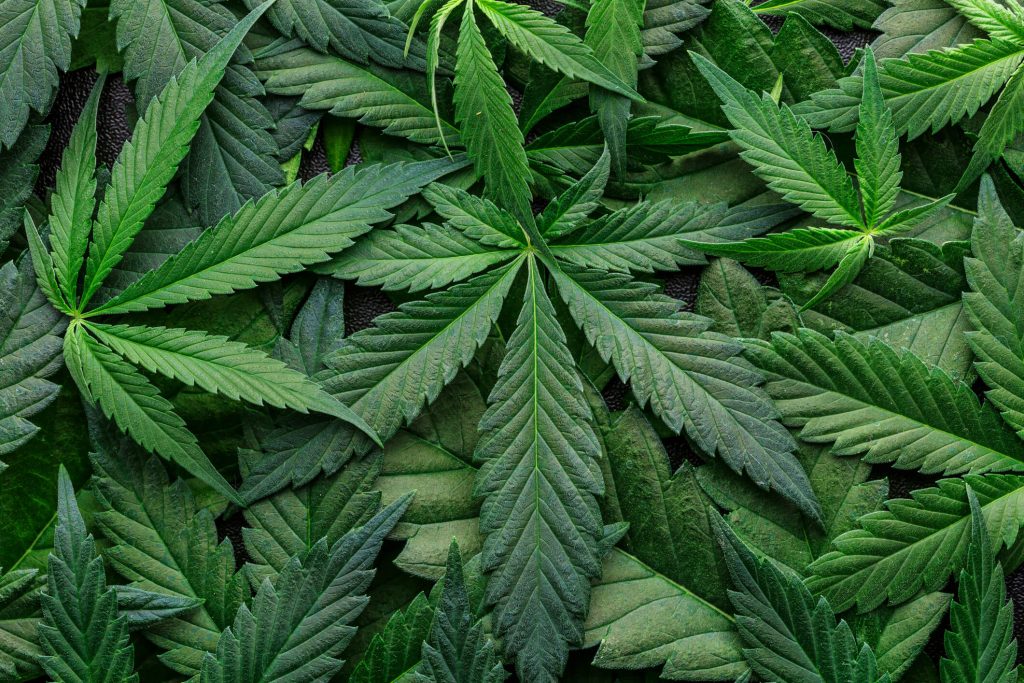
CBD can alter pain perception through effects on ion channels, such as TRPV1, and other systems outside the ECS. It also modulates pain signals by weakly inhibiting the breakdown of AEA by FAAH. This makes it synergistic with THC when it comes to modulating pain signals.
The strong CB1 activity and subsequent psychoactive effects of THC often make it intolerable as a means to modify the ECS on its own. Whereas, CBD counteracts many of its side effects.
This is how various cannabinoids and other substances in Cannabis plants work together to modulate the overall effects, also known as “entourage effect.” Therefore, whole plant extracts may be the optimal approach to using Cannabis to modify the ECS.
The ratios of CBD and THC – as well as the nearly 100 other cannabinoids – in different Cannabis strains, leads to a wide variety of effects and experiences. If you choose to experiment with Cannabis where it is legal, it is best to proceed slowly and with respectful caution.
Food, Nutrients, And Supplements That Can Modify The Ecs
Fish Oil And Arachidonic Acid
Fish oil supplementation may be beneficial to CB1 and CB2 receptor levels. Arachidonic acid and Docosahexaenoic acid (DHA) supplementation increases levels of eCB in pigs. Mice supplemented with the omega-3 eicosapentaenoic acid (EPA) show higher levels of CB1 and CB2 gene activation than controls.
Caffeine
Chronic caffeine consumption may cause CB1 receptors on GABA neurons to be more sensitive. Caffeine can also balance out the decrease in CB1 receptors caused by an acute stress. In a Finnish study, high-dose coffee consumption (8 cups per day) reduced endocannabinoid metabolites in the blood of participants.
Chocolate
Chocolate contains N-linoleoyl ethanolamide and N-oleoylethanolamide, both of which can inhibit AEA breakdown by FAAH. Soybeans, hazelnuts, oatmeal, and millet also contain very similar compounds.
Cruciferous Vegetables
Brassica/cruciferous vegetables contain indole-3-carbinol, which gets metabolized in the body to 3,3′-diindolylmethane (DIM). DIM is a weak CB2 activator. It can also be taken in supplement form.
Extra Virgin Olive Oil
Extra virgin olive oil increased activation of the gene that encodes for CB1 receptors in colon cells in rats and in a test tube environment.
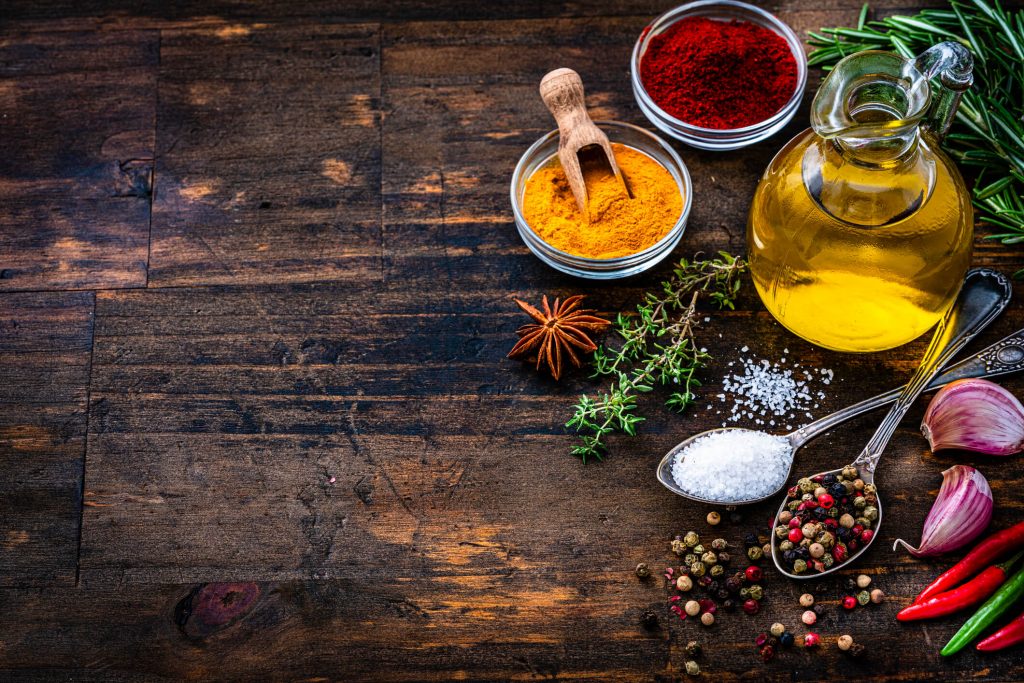
Pregnenolone
Pregnenolone is a precursor to steroid hormones. However, the brain makes its own pregnenolone that acts in the central nervous system in very different ways than in the rest of the body. In the brain, pregnenolone is a neurosteroid. It modulates neurotransmitter functions and contributes to the regulation of mood and cognitive function.
The brain increases pregnenolone production in response to THC. Pregnenolone, in turn, modifies the CB1 receptor in such a way that it turns down the intensity of the signal. This is seen as a protective mechanism of the brain against overactivation of CB1.
Pregnenolone supplementation can lead to modulation of CB1 receptors. Studies in rodents have demonstrated pregnenolone’s ability to block the negative psychoactive effects of THC.
Most forms of pregnenolone will increase blood steroid hormone levels, which could be problematic. Lipolyzed, or micronized, pregnenolone can directly enter the bloodstream and larger amounts can then enter the brain, avoiding excess conversion into steroid hormones elsewhere.
Palmitoylethanolamide (PEA)
This is a natural fatty acid present in certain foods like egg yolks, peanut oil, and soybean lecithin. It is also made in your body. PEA’s molecular structure is similar to our endocannabinoids that modulates inflammation and pain through ECS pathways outside of the CB1 and CB2 receptors.
PEA:
- Enhances certain actions of natural endocannabinoids in the body, including 2-AG and AEA
- Increases CB2 receptor production
- And indirectly activates CB1 and CB2 through entourage effects
PEA may also provide neuroprotective benefits, modulate pain perception, and balance inflammation.
Echinacea
Various species of Echinacea, the purple coneflower, have compounds called N-alkylamides. These are “cannabimimetics”, and because they mimic other cannabinoids, they can partially activate CB2. At low concentrations, these show similar inflammation modulating effects as AEA.
Magnolia
Magnolia officinalis is an herbal medicine commonly used in Asian medicine for anxiety, allergies, and sleep problems. Two compounds, honokiol and magnolol, affect cannabinoid receptors and may be related to the mechanisms underlying their traditional use. Magnolol binds to and activates CB2 receptors, and its metabolite tetrahydromagnolol is 19-fold more potent at these receptors. Honokiol on the other hand, activates CB1 and inhibits CB2.
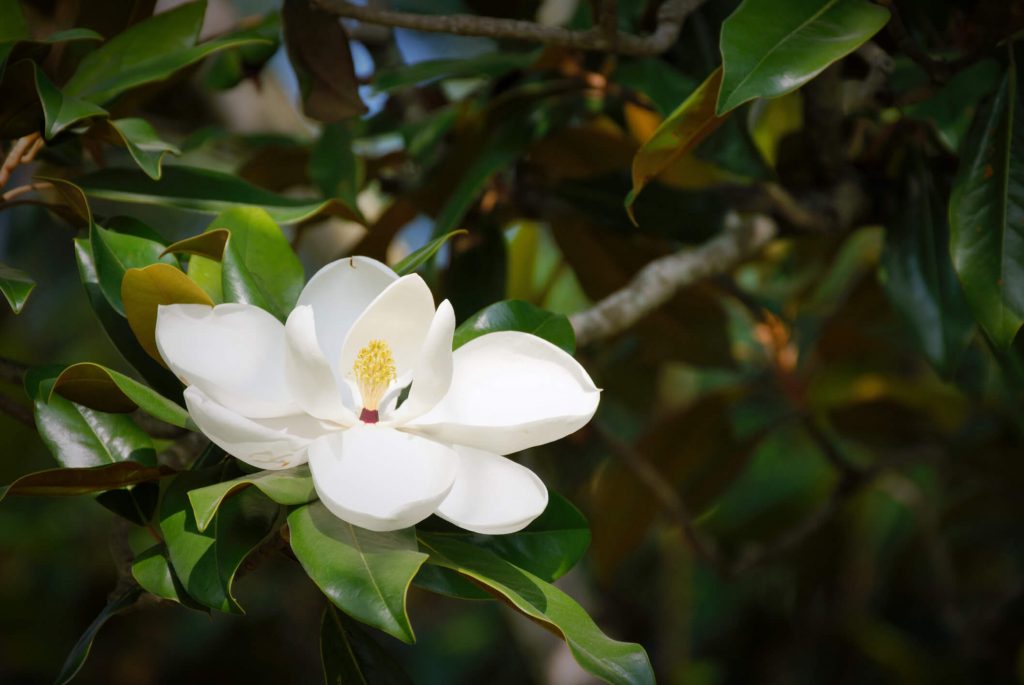
Kava
Kava (Piper methysticum), is a traditional plant medicine with complex pharmacology and mood altering effects. In particular, it demonstrates a calming effect on the nervous system. One of the active compounds, yangonin, binds to the CB1 receptor and may play a role in its ability to modulate mood.
Andrographis
Andrographis is an herb used in Traditional Chinese medicine. It has not been studied in humans with regard to ECS function. However, a rat study demonstrated the active compound andrographolide may reduce CB1 receptors in the liver.
Miscellaneous Plant Compounds With Ecs Activity
- β-caryophyllene, a volatile oil found in many plants including Cannabis, selectively binds to CB2 receptors.
- Pristimerin and euphol are terpenes present in many plants that inhibit MAGL, which breaks down 2-GA, at high doses.
- Trans-resveratrol binds human CB1 receptors. In mice, it creates an opposite response to typical CB1 activation.
- Curcumin binds human CB1 receptors. In mice, it creates an opposite response to typical CB1 activation.
- Genistein is a phytoestrogen found in legumes, such as soybean, that inhibits FAAH, which breaks down AEA.
- Kaempferol is a flavonoid found in a variety of fruits and vegetables that inhibits FAAH.
- Rutamarin, from the medicinal plant Ruta graveolens, binds to CB2 receptors. The physiologic effect is currently unknown.
- Forskolin comes from the plant Coleus forskohlii. It is used for many purposes in traditional medicine and is a nootropic utilized by Nootopia. Chemical blockage of CB1 receptors inhibits some biochemical effects of forskolin, which means it works partly through the ECS.
- ECGC, found in green tea, binds to CB1 receptors with unknown physiologic effects.
- Chelerythrine and sanguinarine, found in the plant Chelidonium majus, among others, binds to CB1 receptors and inhibits its activation in a test tube environment using mouse cells.
- Testosterone increases the number of CB1 receptors in rats.
Cold Exposure
There is evidence that acute exposure to cold stressors increases eCB as well as the number of CB1 receptors in the amygdala.These effects play a role in the changing of white to brown fat experienced during repeated acute exposures to cold stimuli. Brown fat contains many more mitochondria than white fat and can burn fat for fuel, which makes it a common target for fat loss along with dietary changes.
Conclusion
The ECS is one of the most fundamental systems in your body that helps maintain homeostasis. It is an essential regulator of nervous system function that affects behavior, mood, and memory.
While it is possible to target certain eCB receptors for specific effect, the current science on exogenous ECS modulation to improve cognitive processes points toward the use of low dose stimulation and modulation approaches, from potentially a number of supportive measures, capitalizing on the entourage effect.
Remember, the ECS is the primary regulator of neurotransmitter flow and signaling through your central nervous system. Optimizing your ECS while using your personalized Nootopia brain stacks is a way to reach your peak potential to achieve what we like to call, “God Mode”.
References
- Wootten D, Christopoulos A, Marti-Solano M, Babu MM, Sexton PM. Mechanisms of signalling and biased agonism in G protein-coupled receptors. Nat Rev Mol Cell Biol. 2018;19(10):638-653. doi:10.1038/s41580-018-0049-3
- Lu HC, Mackie K. Review of the endocannabinoid system. Biol Psychiatry Cogn Neurosci Neuroimaging. 2021;6(6):607-615. doi:10.1016/j.bpsc.2020.07.016
- Vučković S, Srebro D, Vujović KS, Vučetić Č, Prostran M. Cannabinoids and pain: New insights from old molecules. Front Pharmacol. 2018;9:1259. doi:10.3389/fphar.2018.01259
- Pertwee RG. The diverse CB1 and CB2 receptor pharmacology of three plant cannabinoids: delta9-tetrahydrocannabinol, cannabidiol and delta9-tetrahydrocannabivarin: Δ9-THC, CBD and Δ9-THCV. Br J Pharmacol. 2008;153(2):199-215. doi:10.1038/sj.bjp.0707442
- Rahn EJ, Hohmann AG. Cannabinoids as pharmacotherapies for neuropathic pain: from the bench to the bedside. Neurotherapeutics. 2009;6(4):713-737. doi:10.1016/j.nurt.2009.08.002
- Russo EB. Taming THC: potential cannabis synergy and phytocannabinoid-terpenoid entourage effects: Phytocannabinoid-terpenoid entourage effects. Br J Pharmacol. 2011;163(7):1344-1364. doi:10.1111/j.1476-5381.2011.01238.x[/custom-reference]
- Thomas A, Baillie GL, Phillips AM, Razdan RK, Ross RA, Pertwee RG. Cannabidiol displays unexpectedly high potency as an antagonist of CB1 and CB2 receptor agonists in vitro: Cannabinoid antagonism by cannabidiol. Br J Pharmacol. 2007;150(5):613-623. doi:10.1038/sj.bjp.0707133
- Laprairie RB, Bagher AM, Kelly MEM, Denovan-Wright EM. Cannabidiol is a negative allosteric modulator of the cannabinoid CB1 receptor: Negative allosteric modulation of CB1 by cannabidiol. Br J Pharmacol. 2015;172(20):4790-4805. doi:10.1111/bph.13250
- Morales P, Hurst DP, Reggio PH. Molecular targets of the phytocannabinoids: A complex picture. Prog Chem Org Nat Prod. 2017;103:103-131. doi:10.1007/978-3-319-45541-9_4
- Burstein S. Cannabidiol (CBD) and its analogs: a review of their effects on inflammation. Bioorg Med Chem. 2015;23(7):1377-1385. doi:10.1016/j.bmc.2015.01.059
- De Petrocellis L, Ligresti A, Moriello AS, et al. Effects of cannabinoids and cannabinoid-enriched Cannabis extracts on TRP channels and endocannabinoid metabolic enzymes: Novel pharmacology of minor plant cannabinoids. Br J Pharmacol. 2011;163(7):1479-1494. doi:10.1111/j.1476-5381.2010.01166.x
- Ahrens J, Demir R, Leuwer M, et al. The nonpsychotropic cannabinoid cannabidiol modulates and directly activates alpha-1 and alpha-1-Beta glycine receptor function. Pharmacology. 2009;83(4):217-222. doi:10.1159/000201556
- Staton PC, Hatcher JP, Walker DJ, et al. The putative cannabinoid receptor GPR55 plays a role in mechanical hyperalgesia associated with inflammatory and neuropathic pain. Pain. 2008;139(1):225-236. doi:10.1016/j.pain.2008.04.006
- Russo EB, Burnett A, Hall B, Parker KK. Agonistic properties of cannabidiol at 5-HT1a receptors. Neurochem Res. 2005;30(8):1037-1043. doi:10.1007/s11064-005-6978-1
- Berger A, Crozier G, Bisogno T, Cavaliere P, Innis S, Di Marzo V. Anandamide and diet: inclusion of dietary arachidonate and docosahexaenoate leads to increased brain levels of the corresponding N-acylethanolamines in piglets. Proc Natl Acad Sci U S A. 2001;98(11):6402-6406. doi:10.1073/pnas.101119098
- Hutchins HL. Effect of Omega-3 Polyunsaturated Fatty Acids on the Endocannabinoid System in Osteoblast-like Cells and Muscle. Purdue University; 2010.
- Rossi S, De Chiara V, Musella A, et al. Caffeine drinking potentiates cannabinoid transmission in the striatum: interaction with stress effects. Neuropharmacology. 2009;56(3):590-597. doi:10.1016/j.neuropharm.2008.10.013
- The coffee cannabis connection. Northwestern.edu. Accessed July 20, 2022. https://news.northwestern.edu/stories/2018/march/the-coffee-cannabis-connection/
- di Tomaso E, Beltramo M, Piomelli D. Brain cannabinoids in chocolate. Nature. 1996;382(6593):677-678. doi:10.1038/382677a0
- Maurelli S, Bisogno T, De Petrocellis L, Di Luccia A, Marino G, Di Marzo V. Two novel classes of neuroactive fatty acid amides are substrates for mouse neuroblastoma ‘anandamide amidohydrolase.’ FEBS Lett. 1995;377(1):82-86. doi:10.1016/0014-5793(95)01311-3
- Di Marzo V, Sepe N, De Petrocellis L, et al. Trick or treat from food endocannabinoids? Nature. 1998;396(6712):636-637. doi:10.1038/25267
- Di Francesco A, Falconi A, Di Germanio C, et al. Extravirgin olive oil up-regulates CB₁ tumor suppressor gene in human colon cancer cells and in rat colon via epigenetic mechanisms. J Nutr Biochem. 2015;26(3):250-258. doi:10.1016/j.jnutbio.2014.10.013
- Baulieu EE, Robel P, Schumacher M. Neurosteroids: Beginning of the story. In: International Review of Neurobiology. Vol 46. Elsevier; 2001:1-32.
- Vallée M, Mayo W, Koob GF, Le Moal M. Neurosteroids in learning and memory processes. In: International Review of Neurobiology. Vol 46. Elsevier; 2001:273-320.
- Vallée M, Vitiello S, Bellocchio L, et al. Pregnenolone can protect the brain from cannabis intoxication. Science. 2014;343(6166):94-98. doi:10.1126/science.1243985
- Busquets-Garcia A, Soria-Gómez E, Redon B, et al. Pregnenolone blocks cannabinoid-induced acute psychotic-like states in mice. Mol Psychiatry. 2017;22(11):1594-1603. doi:10.1038/mp.2017.4
- Frau R, Miczán V, Traccis F, et al. Prenatal THC exposure produces a hyperdopaminergic phenotype rescued by pregnenolone. Nat Neurosci. 2019;22(12):1975-1985. doi:10.1038/s41593-019-0512-2
- The endocannabinoid system and palmitoylethanolamide (PEA). Metagenics Institute | Your trusted health, nutrition, and personalized lifestyle medicine resource. Published October 9, 2019. Accessed July 20, 2022. https://www.metagenicsinstitute.com/ce-education/science-sheets/ecs-and-pea/
- Petrosino S, Di Marzo V. The pharmacology of palmitoylethanolamide and first data on the therapeutic efficacy of some of its new formulations: Palmitoylethanolamide and its new formulations. Br J Pharmacol. 2017;174(11):1349-1365. doi:10.1111/bph.13580
- Gertsch J, Raduner S, Altmann KH. New natural noncannabinoid ligands for cannabinoid type-2 (CB2) receptors. J Recept Signal Transduct Res. 2006;26(5-6):709-730. doi:10.1080/10799890600942674
- Raduner S, Majewska A, Chen JZ, et al. Alkylamides from Echinacea are a new class of cannabinomimetics: Cannabinoid type 2 receptor-dependent and -independent immunomodulatory effects. J Biol Chem. 2006;281(20):14192-14206. doi:10.1074/jbc.m601074200
- Rempel V, Fuchs A, Hinz S, et al. Magnolia extract, magnolol, and metabolites: Activation of cannabinoid CB2 receptors and blockade of the related GPR55. ACS Med Chem Lett. 2013;4(1):41-45. doi:10.1021/ml300235q
- Ligresti A, Villano R, Allarà M, Ujváry I, Di Marzo V. Kavalactones and the endocannabinoid system: the plant-derived yangonin is a novel CB₁ receptor ligand. Pharmacol Res. 2012;66(2):163-169. doi:10.1016/j.phrs.2012.04.003
- Lee TY, Lee KC, Chang HH. Modulation of the cannabinoid receptors by andrographolide attenuates hepatic apoptosis following bile duct ligation in rats with fibrosis. Apoptosis. 2010;15(8):904-914. doi:10.1007/s10495-010-0502-z
- Gertsch J, Pertwee RG, Di Marzo V. Phytocannabinoids beyond the Cannabis plant – do they exist?: Phytocannabinoids beyond the Cannabis plant. Br J Pharmacol. 2010;160(3):523-529. doi:10.1111/j.1476-5381.2010.00745.x
- Reggio PH. Endocannabinoid binding to the cannabinoid receptors: what is known and what remains unknown. Curr Med Chem. 2010;17(14):1468-1486. doi:10.2174/092986710790980005
- Korte G, Dreiseitel A, Schreier P, et al. Tea catechins’ affinity for human cannabinoid receptors. Phytomedicine. 2010;17(1):19-22. doi:10.1016/j.phymed.2009.10.001
- Dhopeshwarkar AS, Jain S, Liao C, Ghose SK, Bisset KM, Nicholson RA. The actions of benzophenanthridine alkaloids, piperonyl butoxide and (S)-methoprene at the G-protein coupled cannabinoid CB₁ receptor in vitro. Eur J Pharmacol. 2011;654(1):26-32. doi:10.1016/j.ejphar.2010.11.033
- Lee KS, Asgar J, Zhang Y, Chung MK, Ro JY. The role of androgen receptor in transcriptional modulation of cannabinoid receptor type 1 gene in rat trigeminal ganglia. Neuroscience. 2013;254:395-403. doi:10.1016/j.neuroscience.2013.09.014
- Krott LM, Piscitelli F, Heine M, et al. Endocannabinoid regulation in white and brown adipose tissue following thermogenic activation. J Lipid Res. 2016;57(3):464-473. doi:10.1194/jlr.M065227
- Dzhambazova E, Landzhov B, Malinova L, Kartelov Y, Abarova S. Increase in the number of cb1 immunopositive neurons in the amygdaloid body after acute cold stress exposure. Uni-sz.bg.
